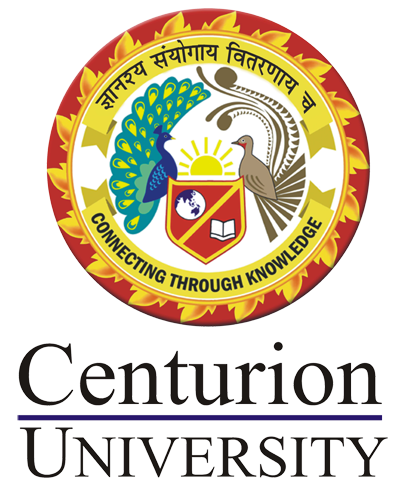I am text block. Click edit button to change this text. Lorem ipsum dolor sit amet, consectetur adipiscing elit. Ut elit tellus, luctus nec ullamcorper mattis, pulvinar dapibus leo.
Concepts of diseases and techniques related to anaesthesia
Course Attendees
Still no participant
Course Reviews
Still no reviews
| Subject Code | Name of the Subject | T-Pr-Pi | Credits |
| CUTM 1821 | CONCEPTS OF DISEASES AND TECHNIQUES RELATED TO ANESTHESIA | 3-0-1 | 4 |
Course Objectives
- To provide comprehensive knowledge of anesthesia principles, patient preparation, intraoperative management, and postoperative care.
- To train learners in systematic preoperative assessment, safe anesthetic administration, and postoperative complication management.
- To enhance skills in equipment preparation, drug administration, monitoring, and patient safety measures.
- To prepare students for handling minor and major anesthesia-related complications, including high-risk cardiac and systemic conditions.
- To develop competency in managing water-electrolyte imbalances, acid-base disorders, and endocrine conditions in the perioperative setting.
Course Outcomes
CO1: Understand the principles and preparation steps for safe anesthesia practice.
CO2: Demonstrate preoperative assessment and preparation for various patient profiles.
CO3: Apply intraoperative monitoring and anesthetic techniques in different surgical situations.
CO4: Identify and manage postoperative complications, minor sequelae, and catastrophic events.
Module I: Introduction : First successful clinical demonstration: Balanced anesthesia, Minimum standard of anaesthesia, Who should give anaesthesia?, Ten golden rules of anaesthesia, Assess & prepare, starve, check the drugs and equipment suction, keep the airway clear, be ready to control ventilation have a vein open, monitor pulse & BP, have someone in the room to apply cricoids pressure – if needed.
Module II: Pre-op preparation: Pre anaesthetic assessment, History – HOPI, Past history – disease
/surgery / anesth, Personal history – smoking / alcohol, General physical assessment, Systemic examination – CVS, RS, CNS, PA Local examination.
Module III: Investigations and Pre-anaesthetic orders
Routine – Urine, E.C.G, Chest x-ray
Patient – Informed consent, NPO
Premedication – advantages, drugs used, Special instructions – if any, Machine – Checking the machine, o2, N2O, suction apparatus, Laryngoscopes, ET tubes, airways, Things for IV accessibility, Other monitoring systems
Drugs – Emergency drugs, Anaesthetic drugs
Module IV: Intraoperative management and Postoperative complications & management
Confirm the identification of the patient, Monitoring – Non-invasive & invasive monitoring,
Induction – drugs used, Endotracheal intubation, Maintenance of anesthesia, Positioning of the Patient, Blood / Fluid & electrolyte balance, Reversal from anaesthesia – drugs used, transferring the patient.
Recovery room – Set up, Things needed, Problems
Complications, Obesity, Anaemia
Module V: Minor sequelae and Major catastrophes
Nausea & vomiting, Sore throat, Laryngeal granuloma, Neurological complications, Awareness, Vascular
Mortality, Causes of death, Cerebral damage, Prevention
Module VI: Anaesthetic consideration in Cardiac Anaesthesia, Cardiac Anaesthesia: NYHA classification Arrhythmias -types of arrhythmias and antiarrhythmic drugs Angina- types Dyspnoea-causes Premedication Setting up of monitoring system Monitoring - invasive and non - invasive Getting ready for the case Induction of cardiac patient, precautions to be taken
Module VII:
Water Electrolyte & Acid Base Disturbances Distribution of Body Water, Dehydration Hyperkalemia, Hypokalemia. Sodium, Calcium Acid Base Disturbances – Types and Treatment. Fluid management in OT, blood loss calculations
Endocrine Disease: Diabetes Mellitus, Thyroid Dysfunction – Thyrotoxicosis, Hypothyroidism Adrenal Gland Dysfunction Diabetes Insipidus.
RECOMMENDED TEXTBOOKS
- Miller’s Anesthesia – Michael A. Gropper et al., 9th Edition, Elsevier
- Morgan & Mikhail’s Clinical Anesthesiology – G. Edward Morgan Jr. et al., 7th Edition, McGraw-Hill
- Aitkenhead’s Textbook of Anaesthesia – Alan R. Aitkenhead et al., 7th Edition, Elsevier
- Basics of Anesthesia – Manuel Pardo & Ronald D. Miller, 8th Edition, Elsevier
Session 1: First successful clinical demonstration in anesthesia
PPT Link:
Video Link:
Session 2: Principles of balanced anesthesia
PPT Link:
Video Link:
Session 3: Minimum standards of anesthesia practice
PPT Link:
Video Link:
Session 4: Who should administer anesthesia (scope and responsibilities)
PPT Link:
Video Link:
Session 5: Ten golden rules of anesthesia practice
PPT Link:
Video Link:
Session 6: Patient assessment and preparation before anesthesia
PPT Link:
Video Link:
Session 7: Preoperative starvation and its importance
PPT Link:
Video Link:
Session 8: Checking anesthesia drugs and equipment before induction
PPT Link:
Video Link:
Session 9: Maintaining a clear airway and readiness to control ventilation
PPT Link:
Video Link:
Session 10: Securing intravenous access and preparing for emergencies
PPT Link:
Video Link:
Session 11: Monitoring pulse and blood pressure during anesthesia
PPT Link:
Video Link:
Session 12: Pre-anaesthetic assessment
PPT Link:
Video Link:
Session 13: Premedication advantages and drugs used
PPT Link:
Video Link:
Session 14: Special preoperative instructions for specific cases
PPT Link:
Video Link:
Session 15: Anesthesia machine checks
PPT Link:
Video Link:
Session 16: Checking laryngoscopes, endotracheal tubes, airways, and IV access
PPT Link:
Video Link:
Session 17: Emergency drugs and anesthesia drugs
PPT Link:
Video Link:
Session 18: Confirming patient identity before induction
PPT Link:
Video Link:
Session 19: Non-invasive and invasive monitoring techniques
PPT Link:
Video Link:
Session 20: Induction of anesthesia
PPT Link:
Video Link:
Session 21: Endotracheal intubation
PPT Link:
Video Link:
Session 22: Maintenance of anesthesia during surgery
PPT Link:
Video Link:
Session 23: Patient positioning during surgery
PPT Link:
Video Link:
Session 24: Fluid, blood, and electrolyte balance in the operating theatre
PPT Link:
Video Link:
Session 25: Reversal from anesthesia
PPT Link:
Video Link:
Session 26: Recovery room setup and necessary equipment
PPT Link:
Video Link:
Session 27: Recovery room problems and solutions
PPT Link:
Video Link:
Session 28: Postoperative complications
PPT Link:
Video Link:
Session 29: Minor sequelae
PPT Link:
Video Link:
Session 30: Major catastrophes
PPT Link:
Video Link:
Session 31: Anesthetic considerations in cardiac anesthesia
PPT Link:
Video Link:
Session 32: Water, electrolyte, and acid-base disturbances
PPT Link:
Video Link:
Our Main Teachers
Teacher in Anesthesia Department

